How to Import Contacts into Outlook
 3.4K
3.4K
 0
0
We can store our contacts through many channels, like iPhone, mac and some media applications. With my situation, I prefer to manage all of my contacts at one place, it will be very easy to call, message or email someone. Also, in some situation, save contacts at mobile phone or social media is not very safe, after your phone broken, format or forget the password of your social media. What’s more, for sending emails to someone, it will be very wasteful thing, if we need to look for the email address and then copy & paste. So someone may choose to Outlook import contacts. In this article, we will introduce how to import contacts into outlook with the help of contact management software.
What Kinds of Formats That Outlook Supported Import?
With the update of the outlook, the formats could be imported to the outlook is different.
# Outlook 2010
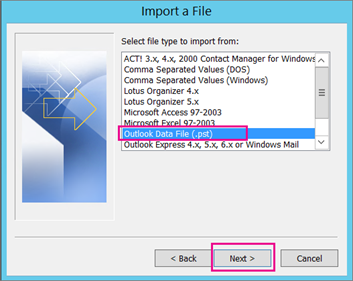
# Outlook 2013/2016
In the newest version, the files supported imported are more clear. The main file formats are .csv and .pst.
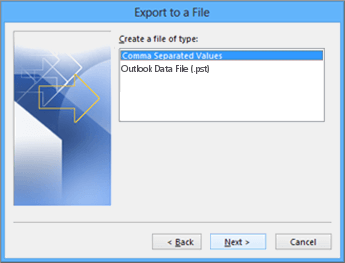
How to Import Contacts into Outlook
For the Commas Separated Values and Outlook Data Files, we usually use the .csv files, and it can generate from many platforms, so here, we will introduce how to import contacts into Outlook in .csv files.
Part 1. Generate the .csv files
If we open the most of our apps, we will find that we have different contacts in different device, or one contact we store several time in different devices. So before we import contacts into outlook, let’s manage our contact in one place and delete duplicates contacts then export all the contacts with .csv files. Here, we will introduce a useful contact management software on computer and tell you how to use it.
For Mac
Step 1. Download the Cisdem ContactsMate
Step 2. Collect and sync all the contacts information on Mac

Step 3. Scan to find and delete duplicate contacts

Step 4. Export the .csv file of your contacts information
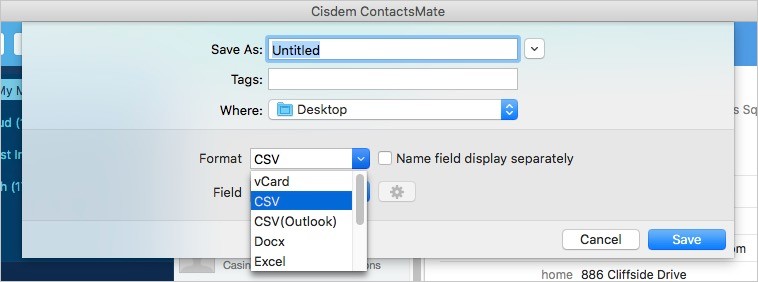
For Windows
Step 1. Download it on your PC.
 Free Download Windows 10 or later
Free Download Windows 10 or later
Step 2. Open it. Enter your email address. Click Continue. Allow yhis tool to access your contacts.
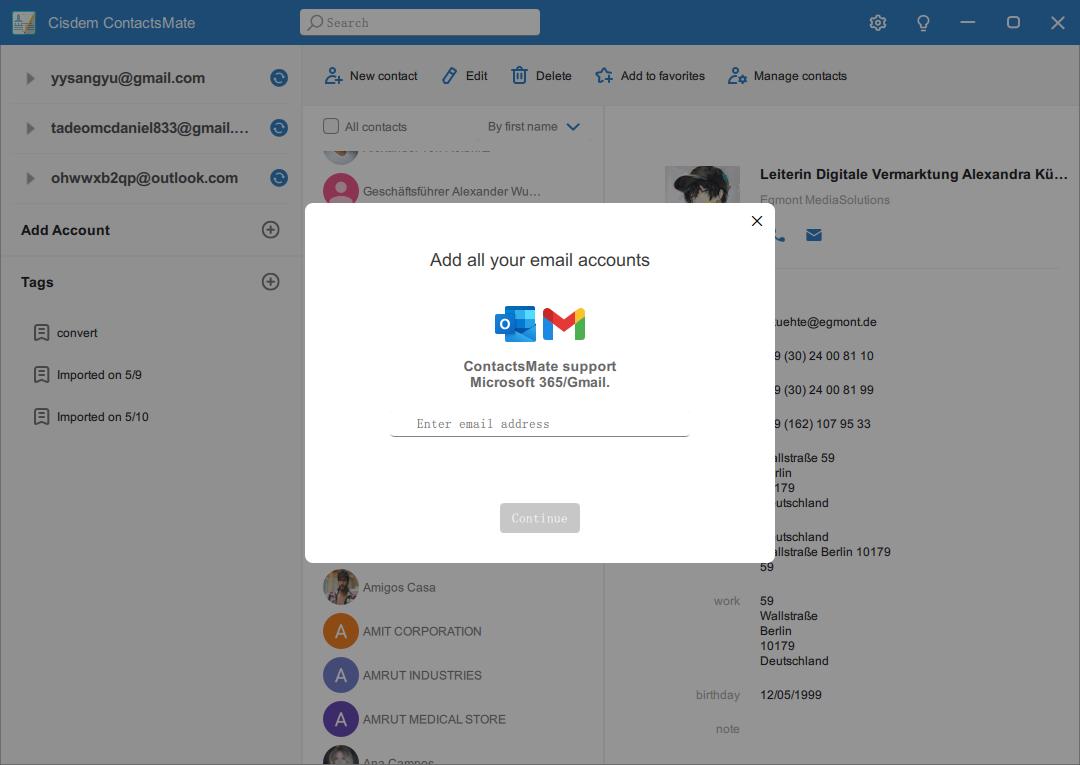
Step 3. Then you'll find your email account in the left sidebar. Click it. Click Merge & fix. Click the Merge all button to merge duplicate contacts with 1-click.
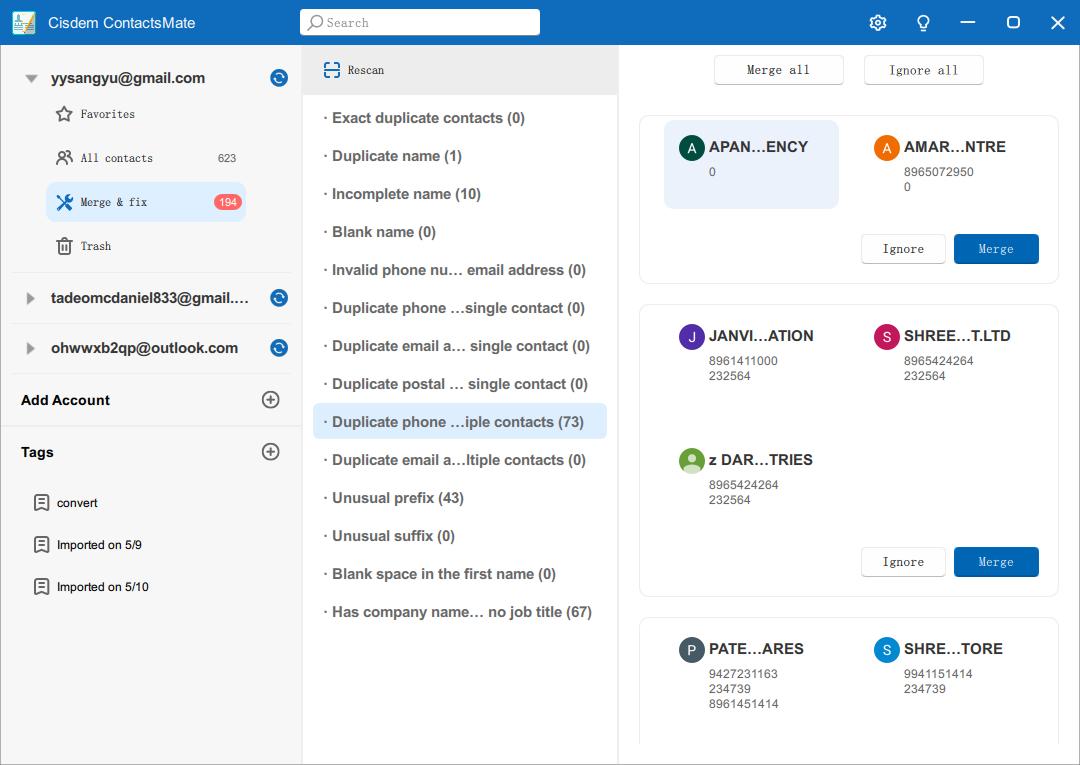
Step 4. Select the contacts you wnat to import to Outlook. Click Manage contacts > Export contacts.
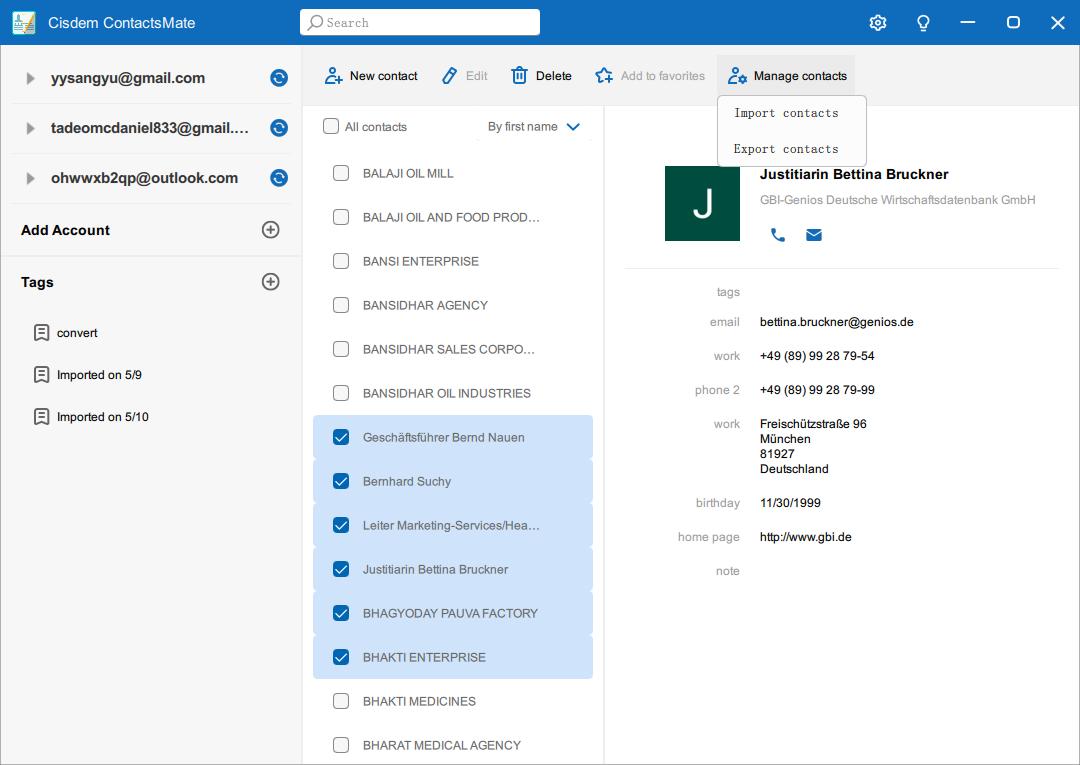
Step 5. Select CSV as the export format. Select Outlook CSV. Click Export.
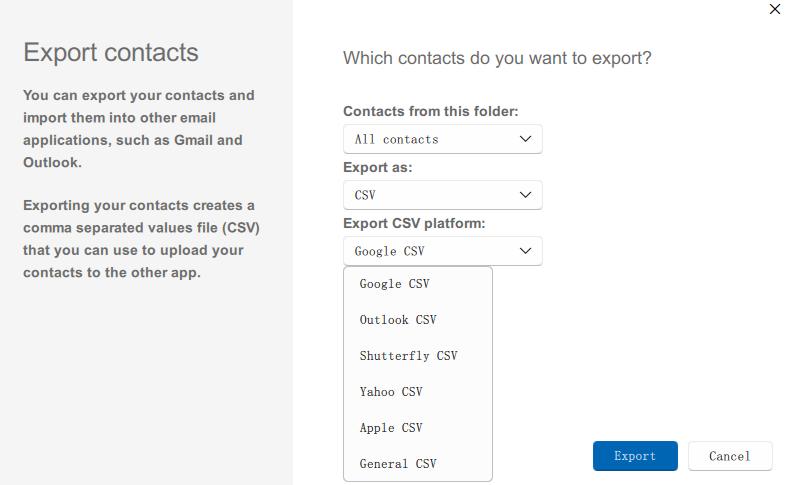
Save the contacts file on your computer.
Part 2. Why we choose this contact management?
Manage our contacts well will be very useful when we have emerge things to contact someone. There are some features about this contact manager.
- Collecting contacts (It supports automatically syncing all the contacts information to one place.)
- Edit the contact with simple operation (It supports Add new contacts, edit and enrich properties to existing contacts. For example, edit the address, email, phone number, photos and etc.)
- Find and delete duplicate contacts (Through the “Scan”, you could find the duplicate contacts and decide what kinds of duplicate contacts can be deleted.)
- Great setting and interface (Wonderful prefix and suffix can match your contact information quickly.)
Part 3. Steps of importing contacts into outlook 2016 or 2013
After we export the .csv files of our contact, what we need to do is importing the files into outlook.
Step 1. Enter the “file” at the top left corner

Step 2. Choose Open & Export > Import/Export
.png)
Step 3. Choose Import from another program or file>Comma Separated Values
.png)
After imports these contacts, you could see the contacts in “People”.
Contact information are very import for everyone. While we change our device, we need to sync these information and delete them permanent. It protects not only ourselves information but our friends’. In this article just show one way to import contacts into Outlook 2016, if you have other ways, nice to get your comments.
FAQs
Can I Import a VCF file to Outlook?
Yes. With Cisdem ContactsMate for Windows, you can import contacts to Outlook directly from a VCF file.
How to manually add a contact in Outlook?
To manually add a contact in Outlook, open the app. Click the People icon. Select New Contact on the tool bar. Then fill the detailed information of the contact such as name, birthday, phone number. Click Create.

With a passion for tech and writing, Sarah joined Cisdem, where she focuses on creating articles about using utility tools to enhance file management and simplify contact management.

Adrian Li is Cisdem’s Chief Engineer and serves as the editorial advisor for Duplicate Finder and ContactsMate. His work and insights have been featured in leading tech publications such as Fossbytes, TUAW, Redmond Pie, SafetyDetectives, and BestForAndroid.




 Free Download
Free Download